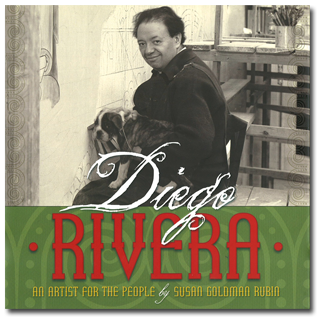
A FEW OTHER EVENTS FOR
MAY 1:
- Happy birthday Bobbie Ann Mason (In Country), and Robert Bender (Lima Beans Would Be Illegal).
- It’s the birth date of Charles G. Shaw (1892-1974), It Looked Like Spilt Milk; Louisa Shotwell (1902-1993), Magdalena; Elizabeth Marie Pope (1917-1992), The Perilous Gard.
- It’s Mother Goose Day, to appreciate nursery rhymes of yore. Read My Very First Mother Goose and Here Comes Mother Goose, both edited by Iona Opie, illustrated by Rosemary Wells.
- It’s also School Principal’s Day. Read Report to the Principal’s Office by Jerry Spinelli, A Fine, Fine School by Sharon Creech, illustrated by Harry Bliss, and Mr. Lincoln’s Way by Patricia Polacco.
May 1, International Workers Day, is celebrated in more than eighty countries around the world The observance originated in the United States in the 1880s as workers mobilized to secure an eight-hour workday. The Association of American Publishers has designated May as Latino Book Month. So today seems like a perfect time to look at Susan Goldman Rubin’s beautifully produced biography, Diego Rivera.
Artists and musicians of another age prove difficult subjects to introduce to contemporary children. But Goldman gets the reader’s attention on the first page. While working in Paris, Rivera told his fellow artists that he had eaten cadavers when taking an anatomy class in Mexico. They dubbed him “the genial cannibal,” a man who loved to tell tall tales. At six feet tall, Rivera weighed more than three hundred pounds. He was called “fatso” or “frog-eyed,” and although he rarely took baths, women found him irresistible! Goldman chronicles only part of his romantic history, naturally focusing on one of his wives, Frida Kahlo.
In very accessible and understandable prose, Goldman shows the development of Rivera as an artist—from his sketches as a boy to his impressive public murals. Studying in Spain, Paris, and Italy, Rivera became attracted to the ancient Italian art of fresco, went to study it, and brought it back to his native Mexico. “The secret of my best work,” he once wrote, “is that it is Mexican.”
The book treats readers to the sketches Rivera created for the Ford Museum. Although initially controversial, the frescos were hailed by the Detroit plant workers and found to be technically accurate. Rivera had a much harder time with his mural for the Rockefeller Center when he included a portrait of Lenin, leader of the Communist party in the Soviet Union. Although Rivera had joined the Communist party in Mexico, they had actually expelled him. Asked to change the portrait to someone more neutral, Rivera refused, and his mural was destroyed.
The text has been enhanced with a beautiful package. Lush, full-color paintings and revealing photographs provide the visual background needed for the story. Goldman captures the essence of Rivera, a man who found great joy in painting. Like many good nonfiction works for ten- to fourteen-year-olds, the book will inspire interested readers to search for more material about Rivera and Frida Kahlo. Anyone hunting for a biography of a Latino superstar this month can do no better than to pick up Diego Rivera.
Here’s a page from Diego Rivera:
Originally posted May 1, 2013. Updated for 2019.







Thank you, Anita for this informative review. I want to read this title more than ever now. My curiosity needs to be satisfied.